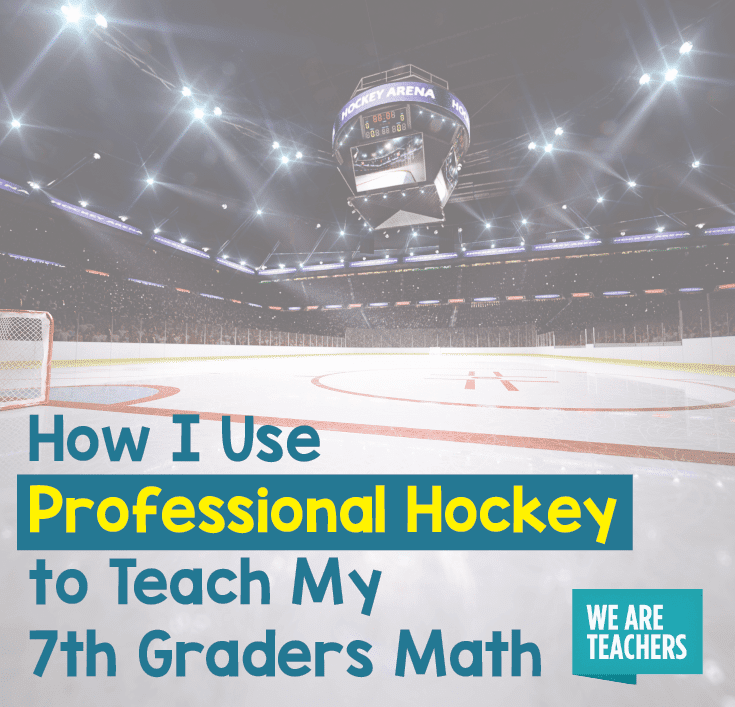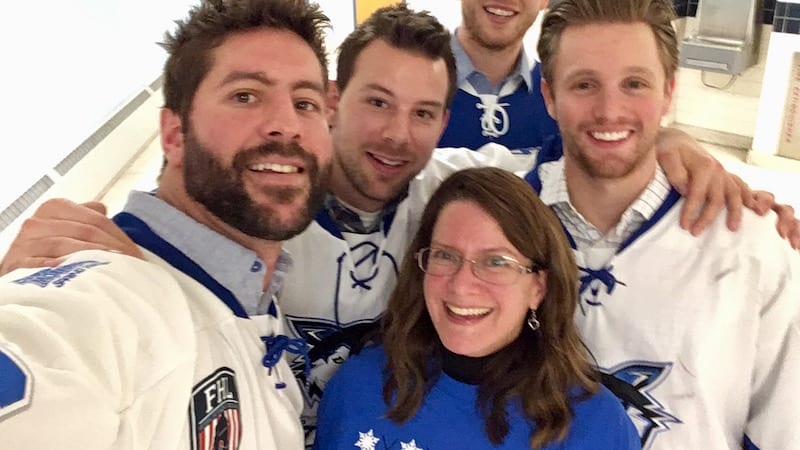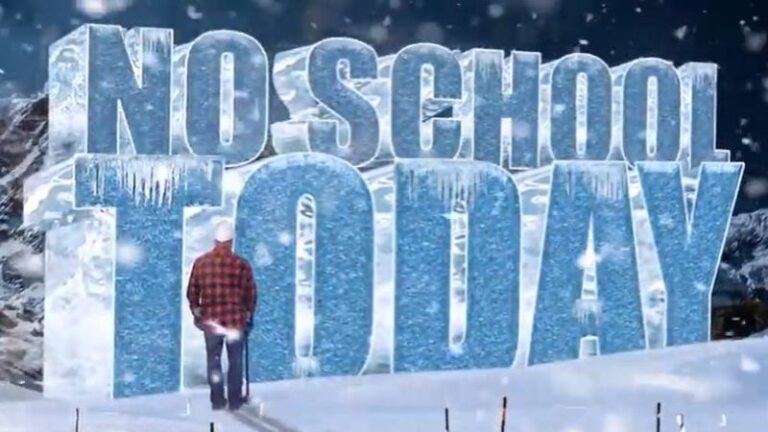I teach seventh grade AIS Math (Academic Intervention Services). My students typically struggle with math for a variety of reasons. After teaching for 25 years, I know that if my teaching style doesn’t match my students’ learning styles, they will not make progress. So I always make it my goal to bring math to life for my students with practical applications of concepts, not just meaningless word problems.
In 2014, a new Federal Hockey League team started in my area, the Watertown Wolves. Being a new fan of the sport, I went to watch a few games. Everything I saw was mathematical. I studied the stats and discovered many seventh grade concepts. Right away, I thought of my students and how wonderful it would be to teach them using hockey stats.
So this is how I make it happen. Starting at the end of October, I construct an entire wall display out in the school hallway, my Wolves Wall. The display includes all of the players and their stats. Forwards are on one side, defense is on the other and the goaltenders are in the bottom center.
The middle holds information about hockey, including its history, abbreviations, penalty descriptions, rink layout, and a brief bio of each of the players. The players’ cards are all laminated so I can update their stats each week. As players come and go on the team, my wall reflects those changes.

Once per 6-day cycle, I take the kids out in the hallway for class. We look at the stats and talk about what they notice to be different from the week before. The students interpret the numbers, which help them learn about each of the players (number of games played, goals, assists, points, shots, penalty minutes, etc.). Then we start working on ratios (point:game, penalty minutes:game, etc). I make mention of the +/- number and explain how that changes using integers.
We figure out each player’s shot percentage. This is an interesting dialogue since hockey stats call it a percentage but leave it as a decimal. Conversion is discussed a lot. Due to the decimal form of the percentage, we have to review rounding. I show them rates as we talk about their statistics.
Since the players are from all around the world, I also have maps in the hallway. We find where each player is from and use estimation and proportions using the map scale to find out how far apart these players live.

Most recently, I was having a discussion with another hockey fan about points earned vs. percentage for team standings. He claimed that higher points caused higher standings. I tried to explain that was not the case because it depended on the number of games played for the percentage.
This person clearly didn’t understand the mathematics involved. I made the decision to give a lesson to my classes about that,which included several “what if” scenarios. They could make sense of the importance of the statistics involved and how they each influenced the outcome. What a joy!
My goal in working with the hockey statistics is to show the kids how the numbers work together and relate to one another. Math is not just about calculations. It is also about reasoning and meaning.
We spend 5-6 months discovering the various aspects of hockey. To help make it real, I bring in some of the players for a question/answer period. The kids want to know about the relevance of their stats and also about the lives of the players. They’ve talked about the geometry of the game, too.
The Watertown Wolves have been very accommodating. We even make time at the end for autographs and pictures. This is a very special moment for my kids because it may be the only time they ever get to meet a professional athlete. And it’s special for me too. The Wolves Wall has become a centerpiece of my classroom, and of my students’ learning.



